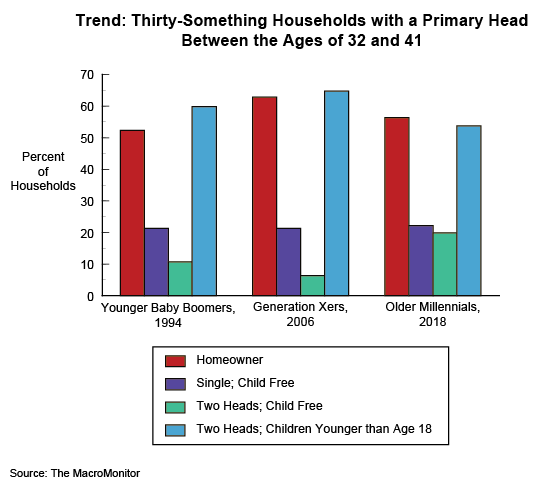Thirty-Somethings November 2019
Want more free featured content?
Subscribe to Insights in Brief

Households with a thirty-something head are important to financial institutions because thirty-something is the age at which the majority of people establish a household, accelerating the need for financial products and services. The MacroMonitor enables us to compare and contrast thirty-something households (households with heads between the ages of 32 and 41) in three generational cohorts: Younger Baby Boomers, Generation Xers, and (Older) Millennials.
Media continue to characterize Millennials as lagging behind previous generations in starting life's traditional path; most will follow the traditional path, although some will do so in nontraditional ways. Despite the Great Recession and high unemployment rates, the facts don't support the notion that Older Millennials differ significantly from GenXers and Younger Boomers at the same age.
Although today's thirty-somethings are less likely than were GenXers in 2006 to own their homes, they are more likely to own their home than were Younger Boomers in 1994. The proportion of households with a single head has remained stable over time at just more than 20%. However, the proportion of households with two heads and no dependent children is significantly higher today than in 2006 for GenXers. In each generation, the proportion of two-head, thirty-something households with children younger than age 18 is greater than the proportion without children, but today's Older Millennials are less likely than their counterparts to have children in the household.
The dynamics of household composition are shifting. For example, the proportion of married heads has seen a dramatic decrease (from 63% in 2006 to 51% in 2018), the proportion of thirty-something divorced household heads declined from 11% in 1994 to just 4% in 2018, and the proportion of people living together outside marriage increased (from 6% in 1994 and 2006 to 10% in 2018).

The Millennials cohort is not homogeneous, and Life Stage is just one measure by which to segment these households. The MacroMonitor provides fact-based information to identify, profile, and understand Millennials better. Thanks to the longevity of the MacroMonitor, data are available to see just how much, if at all, Thirty-Something household heads have changed with time.